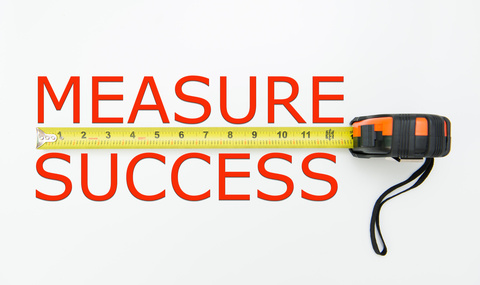- 70% of consumers prefer to get to know a company or brand through original articles rather than through ads. (Entrepreneur)
- Content marketing costs 62% less than traditional forms of marketing. (DemandMetric)
- 61% of consumers report feeling better about a company or brand that offers custom content – and are more likely to buy from them. (Content Marketing Institute)
These facts suggest relevant content, after the product or service a company offers, is a brand’s most valuable asset.
Content marketing takes many forms from blogs, case studies, emails, guides, how-to’s, infographics, interviews, podcasts, product reviews, videos and even native ads. A brand should have a strategy for content marketing specific to the desired business results and then choose tactics.
Are there metrics to guide your company on effectiveness of the business strategy for content marketing? Ones that are most likely to give insights and serve as an actionable scorecard?
Here are 20 data-driven metrics every content marketer should know.
AWARENESS
- VISITS AND UNIQUE VISITORS: The latter refers to the number of distinct individuals visiting your website during a given period; the former the number of times a site is visited, no matter how many visitors make up those visits. These are foundations for awareness. They let you know the size of your audience and if it is increasing or decreasing month to month.
- TRAFFIC SOURCES: Tell you where your audience is coming from: Organic search, paid search, social media, other websites or coming direct, typing your website URL in their browser. This helps you learn if you’re attracting the type of people you want and if it is in line with how you are spending your time and/or money.
- LINKS: Come from other websites, blogs or social network pages that mention your content with a link. It is not only a measure of your awareness; it is a measure of your level of authority on a particular topic.
- KEYWORD SERP RANK: 54% of people find a website through a search query. 34% click on the first website listed in organic search; 90% of clicks occur on the first page (source: Forrester). If your Search Engine Rank Page (SERP) is high for a particular keyword, consumers are likely to be aware of you on a particular topic.
- KEY CONTENT: Is the best indicator of content on your website that visitors find unique and differentiating.
- FAN AND FOLLOWER COUNT: 37% of consumers use social network sites for research to obtain information and feedback (source: Marketing Land). Social network followings are a source for awareness.
ENGAGEMENT
- BOUNCE RATE: Is the percentage of visitors who enter your site and then leave (“bounce”) rather than continuing. It is a key measure of the relevance of your website, content and ability to engage your audience.
- SHARES: Measure content that consumers find most interesting. They also are a means of showing the value of your “earned” media.
- COMMENTS: Are important for lead generation, building relationship and finding your advocates and influencers.
- SUBSCRIPTIONS AND REGISTRATIONS: From email newsletters, ebooks, webinars, subscriptions and registrations are a key lead generation vehicle in a content marketing program.
- KEY INFLUENCERS: Are valuable in promoting your content. They are the people who share, comments, like, and re-tweet your content as well as people you might seek out through tools like BuzzSumo, PeerIndex or Klout who others turn to on topics important to your brand
CONVERSION
- EMAIL OPEN RATES AND CLICKS: Represent the percentage of your audience that usually opens what you send or clicks on actions you want them to take. These metrics also come with their email addresses.
- DOWNLOADS: Usually occur for more content rich pieces like ebook, product information or a podcast. They measure the most interested segment of your audience as well as people who might share your content with others.
- RETURN RATE: If you send a survey out, hold an event or conduct a webinar, the return rate is a valuable measurement for seeing the percentage of people who express interest and respond.
- UNSUBSCRIBES AND OPT-OUTS: It’s as important to know the percent of your audience you may be annoying as interesting with your content and to keep at a minimal level.
- SALES: Are the most important conversion. But, so is understanding buying behavior and the buying cycle which all of the above help to do. For many content marketing programs, there are often “micro” conversion as well as macro conversions. That is, smaller actions that are often predictive of major events.
BUSINESS VALUE
- QUALITY LEADS: Is a metric relative to the segment of your audience most likely to take desired conversion activities
- PIPELINE GENERATED: As is it likely other sales and marketing activities are used to generate quality leads and sales, the pipeline from content marking should also be evaluated relative to its value.
- PRODUCTION COST (TIME AND MONEY): Whether it’s time or money (or both) that are being invested, the human and dollar value should be calculated.
- RETURN ON INVESTMENT (ROI): Just like any other investment, from the metrics above, the return on investment of content marketing can be calculated.
No business should take any major initiatives without an actionable scorecard. Do these data-driven metrics convince you of the measurement value of content marketing? Are there others metric you would include? Do you need help measuring content marketing?





